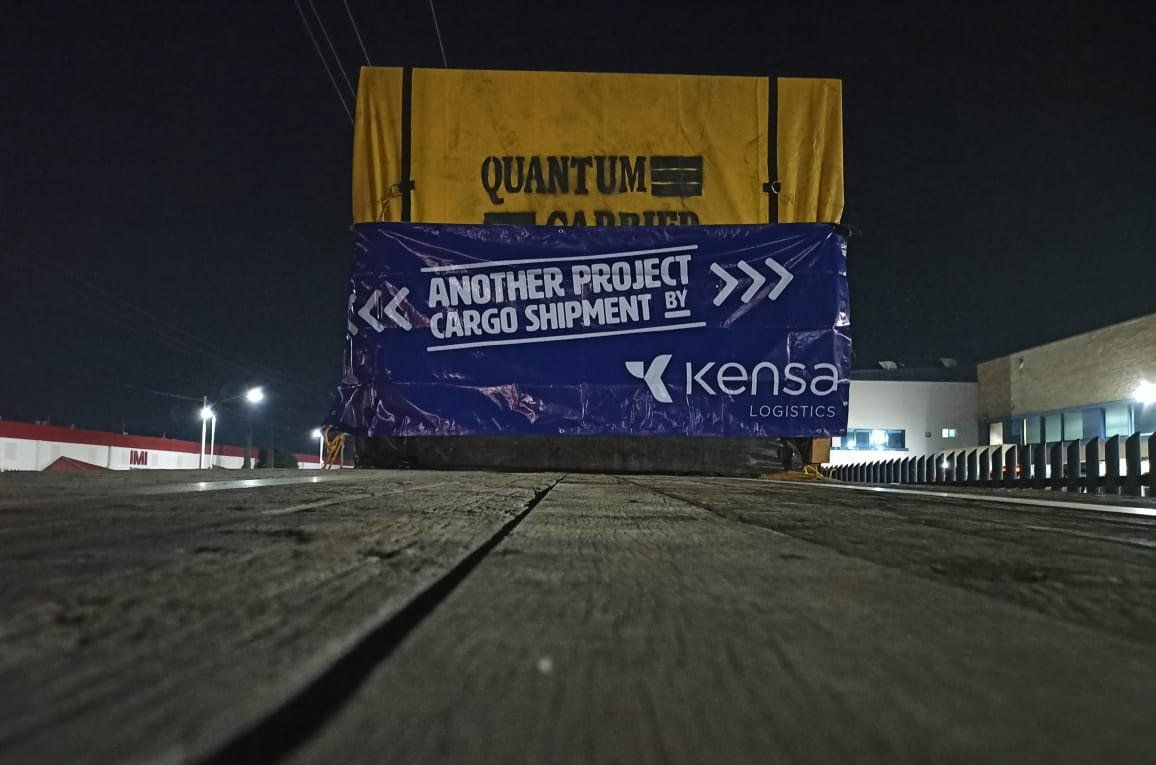A challenge in logistics and customs of the first order implying the transport of 50 tons to Germany in 4 days
Precision is a key concept for KENSA. But, in the case of this specific project, our magic word was paramount: we are referring to a cargo calling for an extremely difficult program design. In short, in order to meet the client`s special needs, we had to make use of a complex formula requiring changes in mode, the crossing of borders and the use of our technical expertise to the full extent. And we managed to do it without any mishaps. The 50 tons arrived at their destination in the planned four days.
Two items of extraordinary weight.
Our client is a world class supplier in the automotive industry (Tier 1) and needed to transport two large parts from Querétaro to Germany as a matter of some urgency. The parts, molds for the subsequent manufacture of aluminum elements, were of considerable weight: one of them weighing 25 tons and the other, 21. This meant that they could not be flown at that particular time from Mexico.
When working with such heavyweights, the usual choice is sea transport. However, in this case, there was very little time, and neither was there a flight available flight in our country at that particular time.
A multimodal solution via the USA
Our solution was to design a multimodal combination, by organizing transport of one cargo by road and another, by air. First of all, we sent two land units to Querétaro, where the cargo of these two parts was arranged. They traveled by land to the North American airport where a specialist airline deals in the transport of goods and has the capacity to deal with cargo of this type.
As a result, the passage to Dallas helped solve a technical problem, but, at the same time, implied extra work: having to deal with complex customs problems. In order to solve it, a specific temporality process needed to be initiated so that the parts transported could enter the United States without the need for them to be processed, as they were merely in transit. All this was done from the Northern border, where all formalities necessary for reaching the USA were carried out to ensure that the cargo could get to Germany without any problems.
Even more difficult
However, the difficulties did not end here because the airline’s warehouse only had operational capacity for cargo up to 20 tons. So, we had to outsource a crane, which could carry out operations in the airport: unload the parts from the trucks, leave them on the ground and then load them onto the airplane, once they had been placed on a specially designed platform for distributing the weight inside the airplane.
Meanwhile, in Europe, where the main headquarters of the airline in charge of the transport is located, engineers were studying how to arrange the cargo so that the flight would be stable. This research lasted three days and the technicians decided to place the parts on a level with the wings of the plane, to provide the necessary balance in a flight which, in the end, reached its destination without any problems and in the required space of time.
The entire operation lasted four days as opposed to the three or four weeks that would have been necessary in the event of having to use usual transport means.



